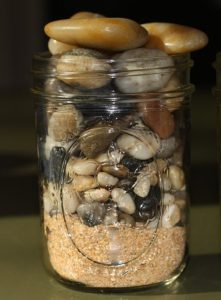Using the Ten Key Scene Structure to Frame Up Your Novel
You’ve spent days, maybe weeks or months, brainstorming the terrific novel you’re about to write. You’re sure you have a killer concept that’s original and compelling.
You’ve studied your genre and torn apart best sellers in order to ensure you know just how to write a novel that has the potential to sell big. Your folder is full of great scene ideas, and maybe you’ve put your scenes on index cards and you’re ready to lay out your plot from start to finish.
BUT . . . now what do you do? How do you determine which scenes go where? And how do you know you even have the best scenes for your plot?
Do you have too many nothing or irrelevant scenes? Not enough important ones? You wonder: Is my story sketchy? Do I need a subplot? Will the action sag in the middle? Will readers get bored and throw my book across the room?
These are questions every author has faced at one point or another. But they’re questions that can be answered, and fairly easily. That is, if you take the time to learn novel structure.
All great stories from time immemorial are structured. While there are plenty of variations and exceptions, most novels follow traditional expected structure, as do movies and plays. We humans have been ingrained with story structure from the moment we first listened to our parents read us bedtime stories.
Novels are made up of scenes. Lots of scenes. If you’re a pantser, you wing it and write whatever scenes come into your head. If you’re a plotter, you sit down and make a list of as many scenes as you can think of, and then you try to put them in order as best you can, maybe create an outline, and then hope it works.
If you’ve written a lot of novels, you probably have a general sense where scenes need to fall in your story. You may know that you need some initial disturbance (also called “the Inciting Incident”) to kick off your story somewhere near the beginning of your novel. And you might also know that at some point your protagonist should be pursuing a goal that builds to a climax somewhere near the end. And then you figure you need to wrap things up and end the darn thing.
Bring Order to Creativity!
But this isn’t enough of a framework. Trying to write a novel with only a few key scenes in place is like trying to walk with only a quarter of the bones in your body. If you guess at where everything goes, you will probably end up with a mess. But if you break down the process into layers, organizing one layer at a time, it’s manageable.
I use this specific layering method for all my novels. I start with the premise and one-sentence story concept. From there I get those ten key scenes figured out. After that, I start layering the next level of scenes.
If you’ve been following my blog awhile, you know all about my layering method. My book Layer Your Novel teaches you everything you need to know, step by step, to layer your scenes to success.
 Have you ever seenanyone fill a jar with rocks and ask, “Is the jar full now?” Teachers love to do this with their young students. The students say yes, it’s full, but then the teacher pours in pebbles, which fill in the spaces between the rocks. “Is it full yet?” the teacher asks. And on it goes. After the pebbles, sand is poured in, to fill the tiniest spaces yet. But the jar isn’t full! The last element added is water. And once water somehow finds space and fills to the brim, the jar is now declared full.
Have you ever seenanyone fill a jar with rocks and ask, “Is the jar full now?” Teachers love to do this with their young students. The students say yes, it’s full, but then the teacher pours in pebbles, which fill in the spaces between the rocks. “Is it full yet?” the teacher asks. And on it goes. After the pebbles, sand is poured in, to fill the tiniest spaces yet. But the jar isn’t full! The last element added is water. And once water somehow finds space and fills to the brim, the jar is now declared full.
Think about your novel that way. If you put in sand first, there won’t be room for the big rocks. And if you put in water before the sand, the water is going to be forced out and will overflow the brim once the sand gets poured in.
These first ten scenes are the big rocks. If you make them the right size, all ten will fit perfectly into your jar. The next ten scenes comprise the small pebbles. And the next ten . . . well, you get it.
Put too many useless scenes in your novel and the story will spill over the edges and ruin your nice new wood flooring. Put in all the cool minor scenes first (pebbles) and you might not have room for the rocks unless you take out a bunch of pebbles. And that’s wasted effort (and may requiring dumping everything out and starting over again).
Thousands of novelists have begun looking into this layering method, and many have touted the ease and logic of it. Read what international best-selling author Jerry Jenkins says about Layer Your Novel:
“Layer Your Novel: The Innovative Method for Plotting Your Scenes mocks pantsers, of whom I am chief. (Well, OK, it teases us, and Stephen King is the chief, but I am a devotee).
And yet I loved this book. There is so much here, yes, even for us pantsers—because in every novel manuscript there comes that point where we wish we were plotters. And as much as C. S. Lakin eschews winging it, her layering method actually allows for enough creativity and innovation that we get the best of both worlds.
If the idea of outlining repulses you, admit there are times when you wish you’d done it, and give Layer Your Novel a peek. It’ll make you a better storyteller.”
I’m excited to announce the launch of my new online video course! It goes deep into the first ten scenes needed to frame up your novel. The course includes more than two dozen video clips from movies, along with excerpts from novels, all to help you truly “get” the framework.
Take the Course!
Enroll in The Ten Key Scenes That Frame Up Your Novel if you want to nail novel structure. CLICK HERE to learn more. This is a course you take at your own pace, with lifetime access and a 30-day money-back guarantee, so what do you have to lose? Nothing. But you have a lot to gain, and that’s novel mastery!












I’m in, ready to go. Can hardly wait. Feel like beginning without the teacher, but alas. . . 😉
You can’t begin until the course is live, but there’s always the book to get the basics.
Just signed up for the class! So excited!